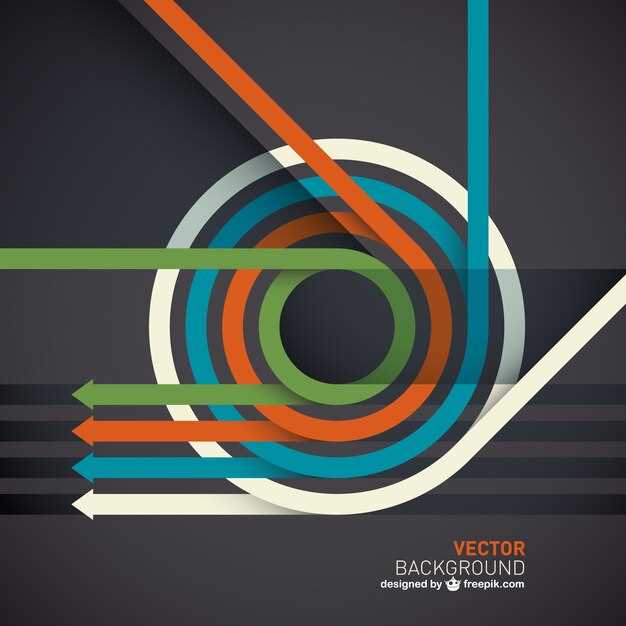Identify source of autopilot cues; replace with concrete action today. Name trigger, notice sign, swap urge with one practical step you can repeat for seven days. This minor disruption weakens grip from past habits; inner clarity follows, felt shift in control accompanies this process.
coincidence appears when you least expect; treat it as a signal to pause; when you pause, youre able to choose a constructive next move rather than returning to past acts. having a simple check-in after morning routines reduces friction; unconscious cues become visible, inner dialogue expands deeper understanding, you feel less alone facing urges.
Train attention toward longer horizons by recording one concrete goal daily; this helps align choices with family wellbeing, emotional health, personal integrity over time. When goals are written as a sentence, inner voice brings forward clearer signals; result is clarity traveling through daily life.
Over time youve wired neural pathways; you can notice truly unconscious draws from prior wiring, interrupt before hurtful actions occur to protect yourself. This ritual creates deeper awareness in moments when action seems automatic; a respectful pause reduces injuries, supports healthier family dynamics.
Clarity grows when you treat each choice as a sign to bring longer-term goals to life; when you act with intention, you align with outcomes that respect inner self, nourish family; residual hurt decreases.
Be Aware Of Your Past
Identify earliest sources shaping present reactions; bring awareness to cues that spark familiar responses when stress arises; share findings with a trusted friend for accountability.
Keep a concise diary documenting event, reaction, result; label cues as from parent messages; look for distorted thinking; connect them to what happened because recognition reduces automaticity; recognizing similarity helps longer progress.
Practice a reframing sentence when distress arises: this cue is a signal, not a verdict. Looking with understanding, one becomes able to choose new responses rather than slipping toward familiar habits; distortion fades because you could see what comes next, truly worth trying before impulse takes over.
Set micro-steps: breathe four counts, pause, choose a constructive response; schedule a daily check-in with a friend; note signals from wired stress responses; longer pauses yield wiser reactions.
Bring humility to each check-in; well practice builds resilience over time. Ever note small gains; expect more calm, saying less, while listening more. When triggers arise, look for signals; longer pause yields meaningful change. Becoming steadier, this process wired through daily life; looking with understanding, similar distortions appear entirely different as you learn. Because reaction starts small, youre invited to never abandon effort; that awareness links back to parental messages, creating worthy traction before breaking reactive habits; truly possible, could become a new normal.
Track Recurring Habits with a Daily Journal
Begin a 5-minute daily journal to identify triggers; log behavior; track outcome. This practice helps replace automatic responses with deliberate steps; emotionally aware, you begin real change.
- Identifying recurring triggers in daily routine.
- Log behavior following triggers; note feelings, fear; room for improvement.
- Choose a replacement action that aligns with goals; replace impulsive move with a calm pause.
- Record outcome after applying replacement; note mistakes, lessons learned, worth of small wins for boss.
- Reflect on past behavior in room or place where behavior repeats; plan a walk or simple routine change to end cycle.
- Set a simple weekly review: identify progress, adjust plan, keep moving toward better room habit.
After weeks, their feelings shift; you feel emotionally lighter, more in control. People notice real progress; boss acknowledges gains. You leave past habits behind, walk toward a new place; room for growth expands. Replace fear with action, begin again; light returns, change becomes real.
Identify Triggers: People, Places, and Emotions
Start with a daily log to map triggers: write who, where, mood; note conditions surrounding each sign.
Identify People who trigger you: partners, colleagues, friends; observe emotionally how interaction shifts both behavioral responses.
Note Places that pull back: home, office, gym, routes; each location carries signs from past experiences.
When emotions rise, cognitive processing shifts; heightened emotion narrows deep perceptions, tilting reality toward fear or craving, as experienced by others.
Clarity becomes a cognitive matter; you can choose them, leave negative conditions entirely, pursue a deeper path.
Pause; label; act: observe signs; select a healthier response that aligns with reality, gaining clarity.
Discuss triggers with partners; set boundaries; share plan for change.
Daily practice includes brief reflection; journaling; quick cognitive reframing.
Every moment offers a chance to adjust perceptions; reality shifts.
Conditions incredibly helpful; recognizing them before actions helped clarify choice.
Question Narratives Driving Your Actions
Start by identifying a press you apply daily: a single question interrupting autopilot. That prompt moves actions from reflex toward place of meaning.
Which move could shift deep feelings away from distorted responses toward a healthier pattern? Ask this before every risky choice to keep focus on progress rather than habit.
Identify beliefs driving extreme actions; such beliefs originate in early family or boss dynamics that shaped self-perception.
Use talk prompts with a trusted listener, including boss-like coaching or inner critic: What facts support this belief, what evidence contradicts, what would shift decisions if tested slowly?
Feelings gauge: press toward deep emotion without judgment; note distortions such as catastrophizing, personalization, binary thinking.
Move from autopilot to tiny experiments; leave a safe zone after identifying a pattern.
Track responses over a two week period; press data points; measure changes in self-esteem.
Deep review cements gains; recognizing which narratives still press actions toward healthier moves; cultivate love for yourself.
Create Boundaries to Pause Automatic Reactions
Pause 60 seconds when signs of heightened emotion appear. Press a calm breath; observe body cues; recognize cognitive load. This opening creates space where you decide response; avoiding transferring impulse to action. dont let repetition drive hurtful behavioral patterns; begin to heal by aligning actions with yourself.
Boundaries create space during down moments; this pause reduces automatic cognitive load; shifts from hurtful source cues; healing proceeds. Social, family dynamics present triggers; recognize these as repetition in wired scripts. This moment aligns actions with core values.
Unconscious drivers reveal themselves slowly; recognize self scripts wired from family, social contexts. Times of stress become openings for real change; taking small steps accelerates progress; this process isnt instant, yet progress rises.
| Phase | Действие | Выгода |
|---|---|---|
| Phase 1 | Pause 60 seconds on signs; press breath; observe body cues; recognize cognitive load | Lower arousal; higher self recognition; choice appears |
| Фаза 2 | Set boundaries about social contact; exit tense scene; dont escalate emotions; prevent transferring emotion | Prevents hurtful transferring; preserves energy; maintain alignment |
| Фаза 3 | Отслеживайте неосознанные сценарии из семейного культурного контекста; называйте триггеры; документируйте понимание | Повышайте самоконтроль; сокращайте повторения; начните реальные изменения в поведении |
Проектирование подпрограмм замены для небольших, положительных вариантов выбора
Начинайте 60-секундный обмен всякий раз, когда появляется триггер: заменяйте болезненную реакцию простым позитивным действием.
Варианты: выпить воды; встать, потянуться; дышать на 3 счета; сделать шаг к естественному свету; записать правду о потребностях; написать доверенному союзнику. Держите эту шпаргалку в комнате, доступной в момент позыва.
Регистрируйте результаты, чтобы повысить осведомленность. Наблюдайте, как самооценка смещается в сторону подлинной ценности; чувство достоинства растет. Любовь растет с каждым крошечным действием. Повышенная мотивация следует за последовательными ответами. Закрепленные реакции ослабляются по мере формирования новых действий. Сила растет с постоянной практикой. Убеждения смещаются в сторону устойчивости.
Открытие истины раскрывает реальность потребностей, а не недостатков. Это осознание служит знаком; смотрите в сторону ответов, которые соответствуют ценности.
Терапия помогает углубиться в работу: исследовать триггеры, перенастроить реакции, выработать более здоровое поведение. Если вы испытали трудности, повторите цикл, чтобы восстановить уверенность.
Дело не в совершенстве; речь идет просто о небольших, надежных шагах. Даже когда настроение падает, целенаправленные действия поднимают его.
Снова наблюдайте за результатами, корректируйте параметры.
Этот подход помог многим почувствовать чувство контроля, которое когда-то казалось неуловимым.

 Разорвите круг – как прекратить повторять старые модели поведения и шагнуть в свое будущее">
Разорвите круг – как прекратить повторять старые модели поведения и шагнуть в свое будущее">


 4 отличных способа избавиться от эго и обрести счастье">
4 отличных способа избавиться от эго и обрести счастье">
 Сила любви к себе в воплощении ваших мечтаний">
Сила любви к себе в воплощении ваших мечтаний">
 Почему вам не хватает уверенности в своей интуитивной компетентности и как ее развить">
Почему вам не хватает уверенности в своей интуитивной компетентности и как ее развить">